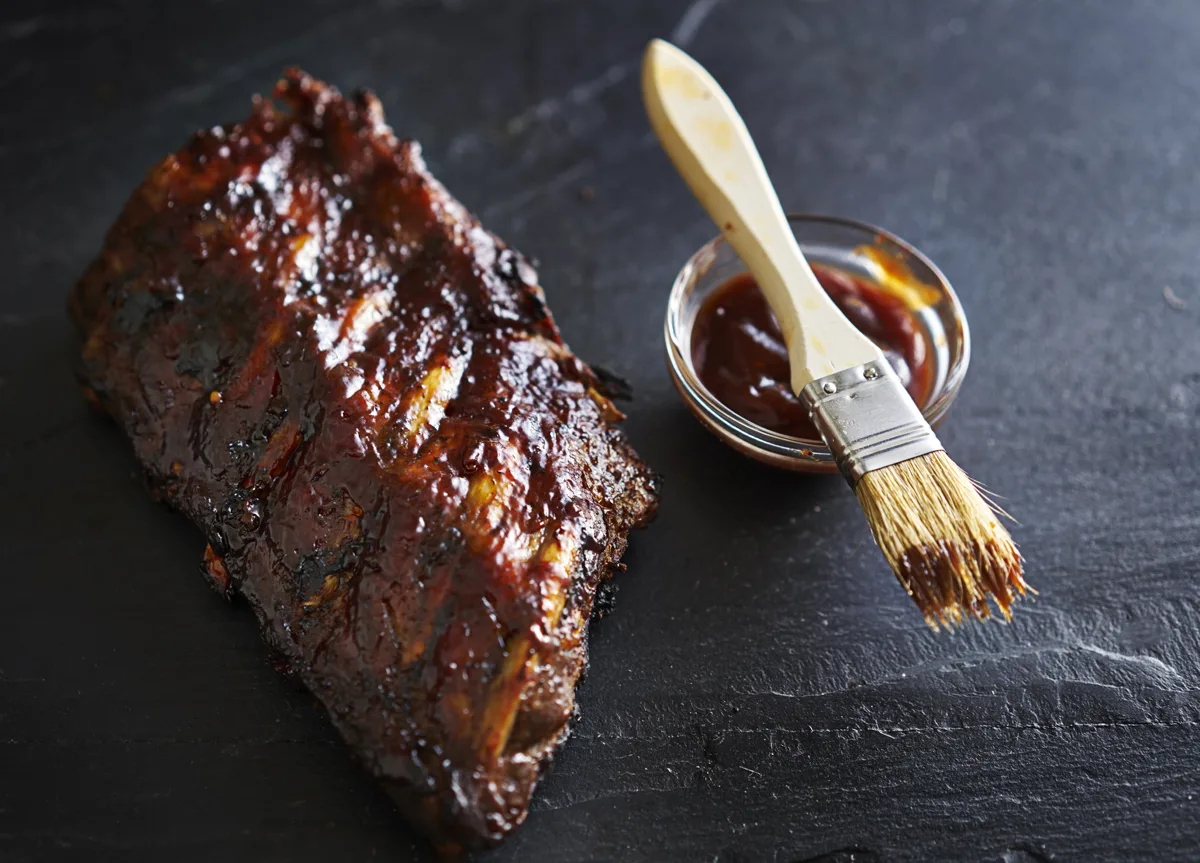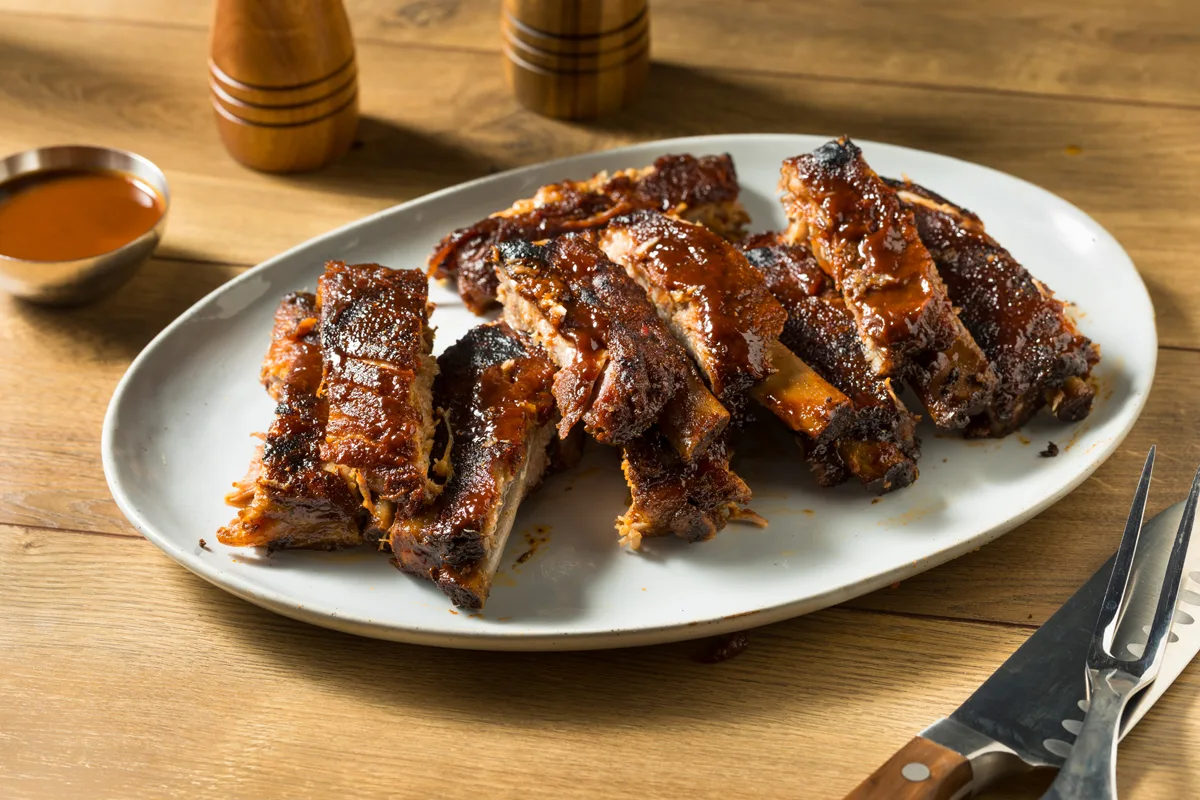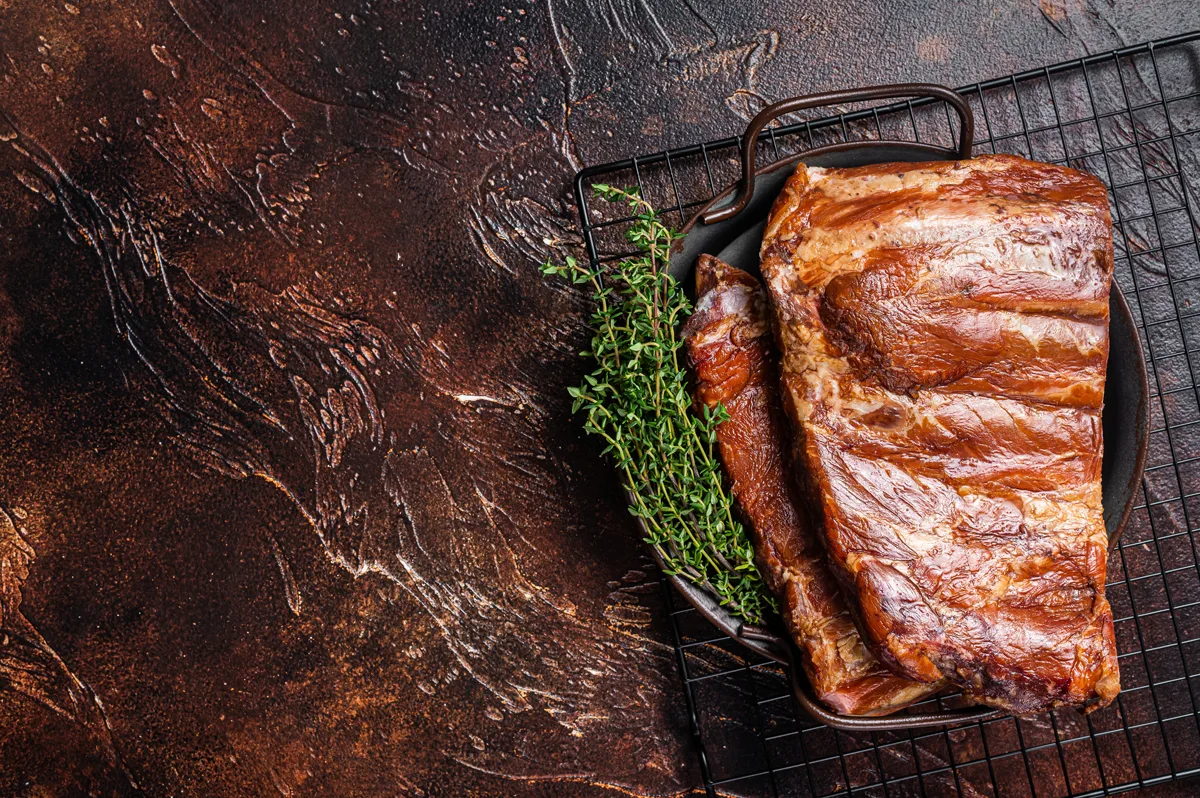If you have any experience cooking ribs, then you know they must be smoked over a small fire for a long time.
Even if you just enjoy eating ribs and you don’t know anything about cooking them, you know they need a long time to cook.
Most recipes recommend smoking ribs at 225°F. However, raising the temperature of your electric smoker a few degrees will not drastically impact the outcome.
You will still end up with tender, juicy ribs, but how long do you smoke ribs at 250°F.
Contents
Types of Ribs
Before you fire up your offset smoker to cook your ribs, you must know there are many types of ribs.
There are still many types of pork ribs, including back ribs, St. Louis ribs, and spare ribs. In the same way, there are many types of beef ribs, including beef back ribs and short plate ribs or short ribs.
Back ribs are carved from the top of the spine. Back ribs have a noticeable curve running along the rack.
Because they are not large like spare ribs, you may hear back ribs referred to as baby back ribs. Baby back ribs don’t have as much meat as spare ribs and are much leaner.
In contrast, spare ribs are carved from the belly of the animal. Spare ribs are broad and flat. However, spare ribs contain a high ratio of fat as well as a good ratio of meat.
Spare ribs that have the lower cartilage removed from the rack are called St. Louis ribs.
All in all, spare ribs have a longer cooking time than baby back ribs. Therefore, you should modify the recipe’s cooking time by 50% if you are using one in place of the other.
For example, if baby back ribs take 7 hours, you need to increase the cooking time to 9 hours if you are using spareribs.
Beef back ribs come from the dorsal region behind the shoulders. This is the region where prime rib roast comes from. After the prime rib roast is cut, the remaining meat that’s attached to the rib bones is the beef back ribs.
Short ribs are fabricated from the rib region of the animal. They are ribs 6, 7, and 8 and fall underneath the ribeye.

Should Properly Cooked Ribs Fall off the Bone?
Properly cooked ribs should never fall off the bone. Unfortunately, the phrase fall of the bone is associated with pork ribs.
Most BBQ enthusiasts know that fall off the bone ribs are nothing to run home about. In fact, it is purely a myth.
When pork ribs fall off the bone, it means your ribs are overcooked.
This means that the ribs have lost most of their moisture which means you will be biting into a dry rib that has an undesirable mouthfeel.
In addition to this, because you will likely have leftover ribs, it will be much harder to reheat the ribs and end up with moist ribs.
Remember, if the ribs fall off the bone, you will likely end up with dry ribs when you are reheating them.
For this reason, it’s best to remove the ribs from your propane smoker when they have an internal temperature of 195°F.
If the ribs are smoked to a temperature above 203°F, they will start to lose their moisture and dry out.
Do not depend on your smoker’s thermometer to measure the temperature of your ribs. The smoker thermometer only measures the unit’s ambient temperature, not the ribs.
This is why it’s best to use a dual probe thermometer so you can insert one probe into or near the ribs and clip the other probe to the smoker.
Best Wood for Smoking Pork Ribs
Fruit woods work best with baby back ribs. The sweet flavor gives contrasts beautifully with the meat. However, pecan wood also adds a tasty flavor to back ribs.
Regarding spare ribs, because they are heartier and meatier than back ribs, oak wood is best.
Oakwood has a potent flavor that will not overpower the flavor of the ribs. Nevertheless, a mix of hickory and mesquite wood still pairs beautifully with spare ribs.
How Long to Smoke Ribs at 250
Although nothing compares to the flavor of ribs smoked in a pellet smoker. However, you can turn your kamado grill or natural gas grill into a smoker and adjust the recipe to include the longer cooking time.
For example, if you want to turn your portable pellet grill into a smoker, you need to build a fire on one side of the grill and cook the ribs on the other side of the grill.
You can place a small aluminum pan of water or apple juice directly underneath the meat to generate smoke.
Generally, it takes about 4 hours to smoke baby back ribs at 250°F. St. Louis-style ribs will also take 4 hours to cook at 4 hours.
On the other hand, it will take about 4 1/2-5 hours to smoke spare ribs at 250°F.
How Long to Smoke Beef Ribs at 250
Since beef ribs are much larger than their pork counterparts, they will take longer to cook.
On average, beef back ribs cooked at 250°F can take about 6-8 hours to become tender. However, it may take longer to smoke, so be patient.
In contrast, short ribs will take about 5 hours when smoked at 250°F. However, it may vary depending on the size of the ribs.
For example, a 3-bone rack of plate ribs will take about 6-8 hours when smoked at 250°F.

How to Smoke Ribs at 250
I could not discuss how long to cook ribs at 250°F without showing you how to actually cook ribs at 250°F. The first step of smoking ribs is making sure you have the best quality ribs to smoke.
Ribs should have a pink color with a healthy amount of meat running throughout the meat.
A healthy amount of marbling is necessary so it can render while the ribs are smoking.
Once you’ve got the perfect ribs, there’s a little bit of prep work involved. First, you must remove the silver skin from the pork ribs and trim any additional fat from the flesh.
Some butchers may remove the silver skin, so you may not need to worry about it.
To remove the silver skin, turn the ribs over, so the curved side is facing towards you. Use a knife to remove a small corner of the silver skin on one side of the ribs.
Grab the end of the silver skin with a paper towel and pull the silver skin away in one motion.
Next, pat the ribs dry and slather them with a layer of mustard. Add your favorite BBQ rub to the ribs and massage it into the meat.
You can marinate the pork ribs overnight in the fridge or for a few hours in the fridge.
Remove the rack of marinated ribs from the fridge and let them come to room temperature while you set up your smoker. Heat your smoker to 250°F.
Add your ribs to the smoker and let them cook for 2 hours. Remove the ribs from the smoker and double wrap them with foil. Smoke the ribs for another 2 hours.
Remove the foil from your ribs and brush them with a little BBQ sauce. Smoke the ribs for an additional 30 minutes until they develop a mahogany color.
Remove your ribs from the smoker, then let them rest for 15 minutes before slicing and serving them. These instructions apply to pork ribs.
However, if you are using beef ribs, you can still use the same cooking method but do not wrap the ribs.
If you wrap the beef ribs, the bark will not form. Simply smoke the ribs for 6 hours until they are tender.
How To Tell When Ribs Are Done
There are multiple ways to tell if ribs are done cooking. The easiest way to tell if ribs are done is to inspect the bones. If 1/4-1/2-inch of the bones are visible, the ribs are done.
Alternatively, to check if your ribs are done cooking is to carefully lift the ribs with a pair of tongs and lightly lift them up and down from the cooking grate a couple of times.
If your rack of ribs cracks in the middle, remove it from the smoker immediately.
You should also keep an infrared thermometer handy to monitor the temperature of the ribs.
Simply point the infrared thermometer at the rack of ribs to determine the internal temperature of the ribs.
Final Thoughts
There’s nothing like a succulent tender rib. However, you can easily forget about your ribs in the smoker and end up with dry, fall-off-the-bone ribs.
Even though smoking ribs at 250°F will speed up the cooking process, it can also dry out the ribs much faster.
That’s why you need to know how long to smoke ribs at 250°F. So set your time and smoke up some delicious, tender ribs.

I have been smoking and grilling meat from an early age and enjoy sharing my knowledge and expertise through the hundreds of articles I have written about BBQ. I hope to make everyone’s BBQ journey that little bit easier.

